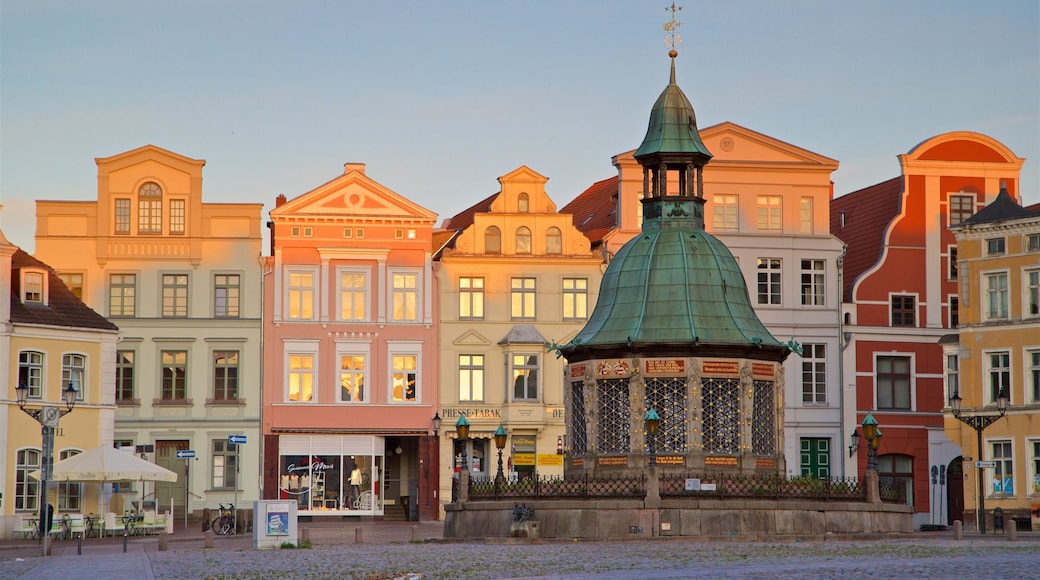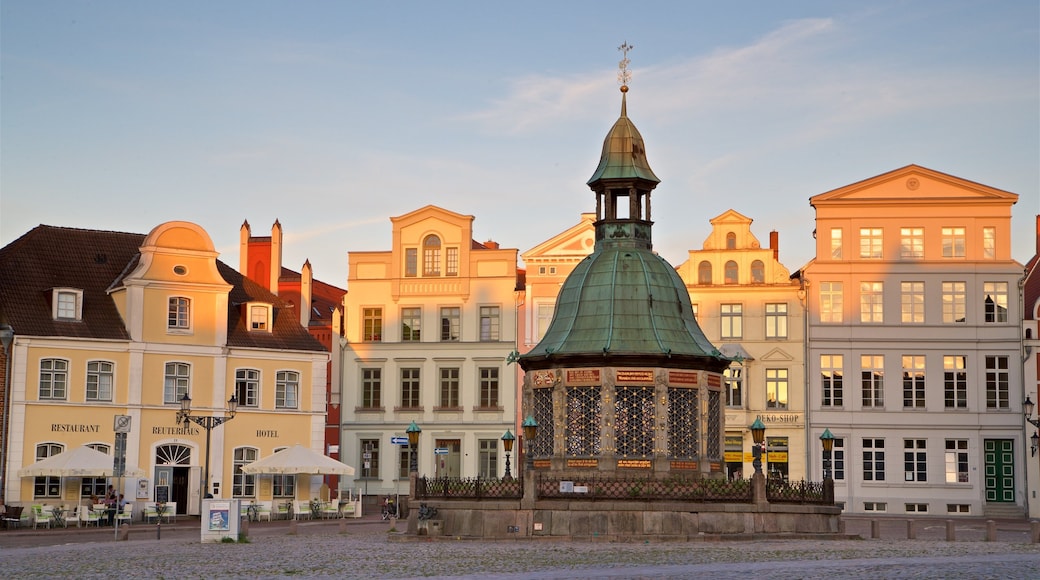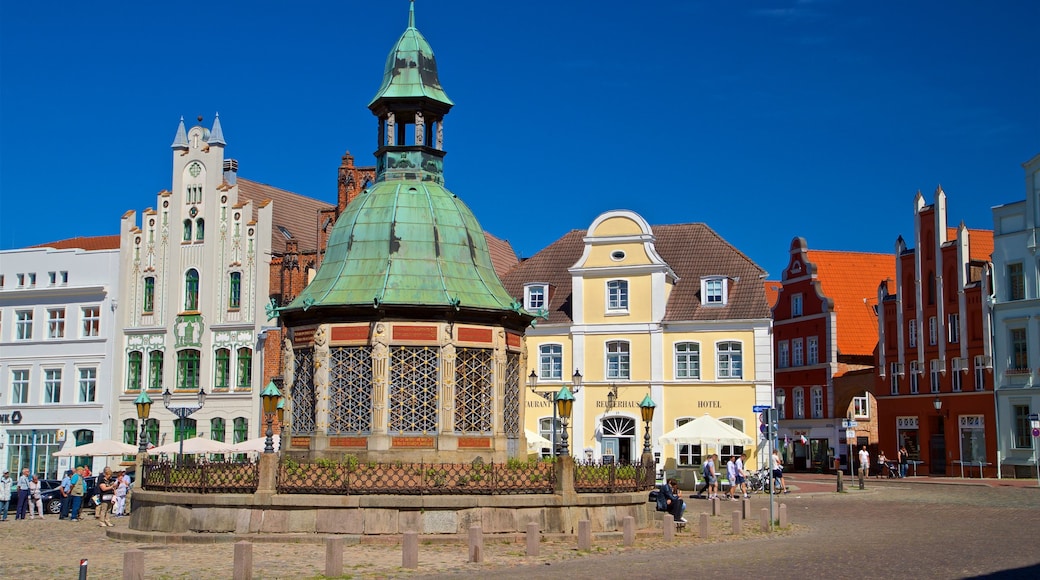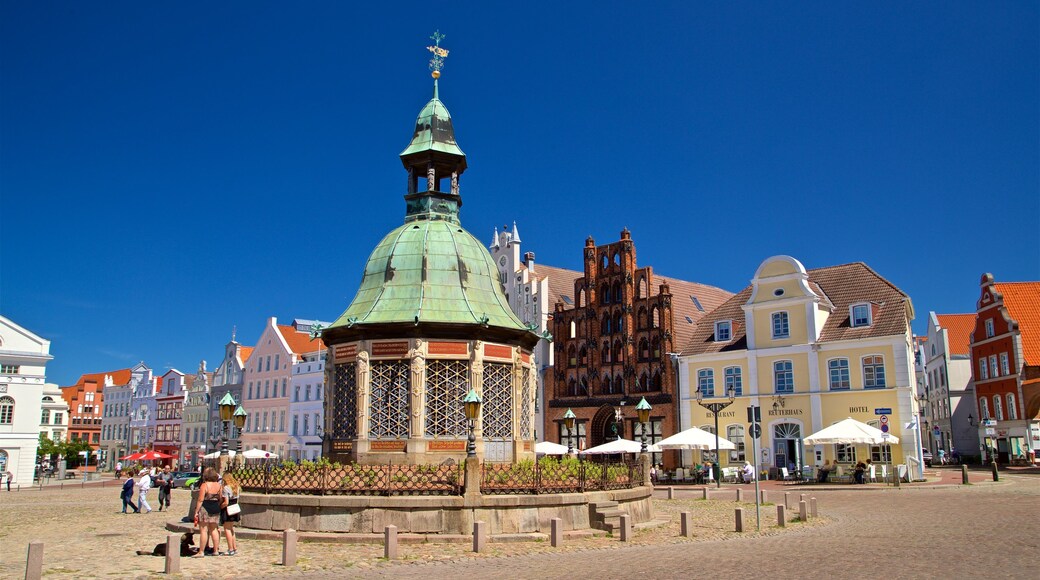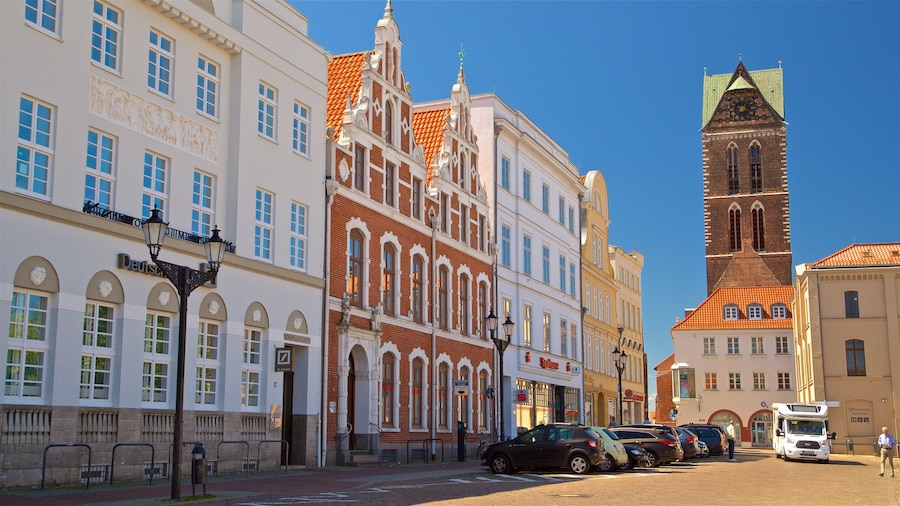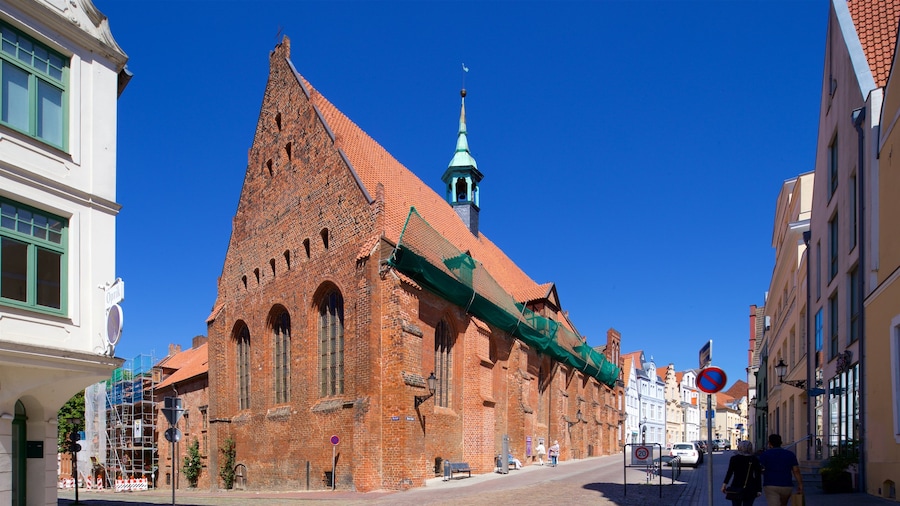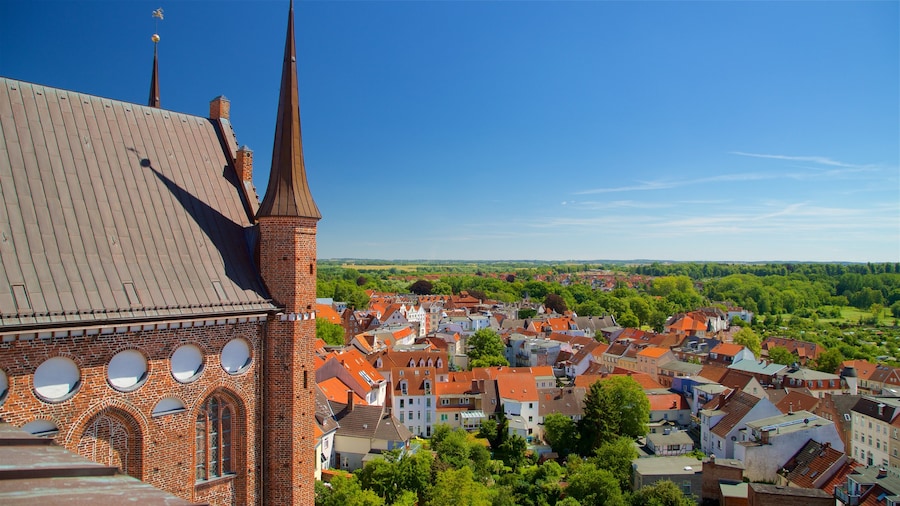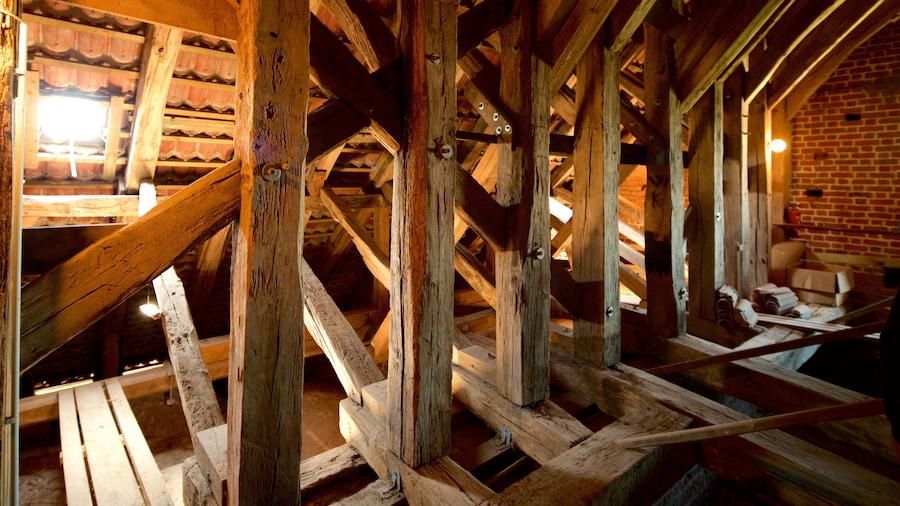Located in Wismar’s Market Square, this 17th-century building supplied the town with water and is an excellent example of Baroque civic design.
Built in response to Golden Age Wismar’s need for municipal water, the Wasserkunst is a wonder of both engineering and design from the famous Utrecht architect Philipp Brandin. Construction was delayed for over 20 years as the builder and the city quibbled over money. When it was finally built in 1602, it was instantly recognized as a marvel, supplying 220 homes and 16 public fountains with a continuous flow of water. Continuously renovated over the years, it was finally retired at the end of the 19th century. See it today as an important landmark of Wismar’s Old Town.
On your walk toward the Wasserkunst, feel the energy of Market Square, which dominates one corner and is a favorite meeting spot for both locals and tourists. Admire the elegant style of the building, from its domed and steepled roof to the merry red and gold paint that adorns its sides. Spot the dragon-shaped statues that protrude off the edge of the roof, spewing water on rainy days. Squint at the golden weathervane to see which way the wind is blowing.
Admire the slightly scandalous male and female bronze mermaids that serve as water channels. Their nudity was offensive enough to the Lutheran city elders to have them removed to the City Museum, only to be replaced by copies in 1998. Practice your Latin or your German on the inscription, installed during the Wasserkunst’s 19th-century renovation, which describes the evolution of the water supply in the city. Snack on bratwurst from one of the nearby shops and imagine the hustle and bustle when the people of Wismar would come here every day to replenish their water supply.
Find the Wasserkunst on the southeast corner of Market Square in the center of Old Town. Walk to Market Square in 10 minutes from the train station or 20 minutes from the port. Parking is available on Market Square itself. The building itself cannot be entered. The informational plaques are in German, but you can find additional information in English at the Tourist Information Center a few blocks away.
